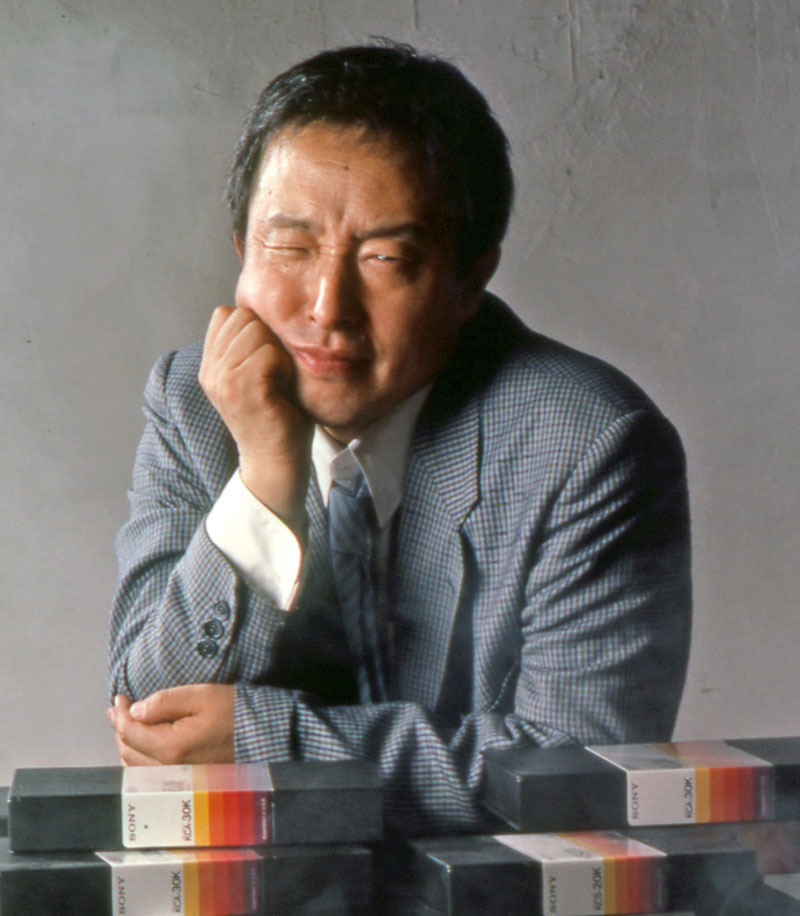A tale of two men, some machines, and movements

MANILA, Philippines — In the age of iPhones and Instagram, when practically every Tom, Dick and Jillian has been given the permission to christen themselves as artists, pioneers, and influencers, there are people we forget to thank for blurring the lines between technology and art. One of them is Nam June Paik, a Korean-American artist and founder of the “video art” movement.
Paik’s work would become watershed moments in the field of installation art via “TV Buddha” (1974), an assemblage which has a Buddha with a video, contemplating itself, as well as performance and sound art, with his “TV Bra for Living Sculpture” (1975), a collaboration with cellist Charlotte Moorman. His visionary nature even extended to the term, “Electronic Super Highway,” something he coined in 1974, two decades before the world wide web. He was pioneering and his work broke ceilings. Paik’s acceptance into the New York avant-garde scene was groundbreaking for Asian-American artists and a great moment for immigrants and refugee artists seeking to express themselves in a pre-Trump world.
On closer shores, there’s another man we should give credit for pushing envelopes and mixing art and tech. That artist comes to us in the form of Johnny Manahan (b. February 11, 1947). Yes. That Johnny Manahan.
Okay. I can hear you all gasping from way over here. “Wait. Whut? But.. but.. Johnny Manahan is showbiz.” Yes, he is indeed, but Johnny Manahan is also a man firmly rooted in the visual arts. Much like Paik, Manahan is a worldly man and a product of a generation molded by free-thinking in a time of conflict. Educated by the Jesuits in Ateneo de Manila and tempered by the liberal values of a Vietnam-era University of California Berkley. Johnny Manahan experimented, painted, sculpted, studied, collaborated, and mixed up concepts and media just like Paik a generation before.

Nam June Paik Photo courtesy of León Gallery
At the dawn of martial law in 1972, Filipino conceptual artist, Roberto Chabet, included Manahan in his annual “Thirteen Artists” exhibition at the Cultural Center of the Philippines. Manahan exhibited the works, “Self Portrait with Lens Cap On” (1972), a collection of 36 photos (one whole roll) of dark self-portraits, punctuated by the word ‘Kodak’ and “I will Breathe, Scale in time: 1:27 components, Plastic Bag Covering Head, CO2, O2,”, an installation that featured a video monitor and 19 pieces of 11x17 photographic stills from the video itself, that of Manahan smoking a cigarette with a bag over his head.
These works which combined photos, video electronics, logos, and performance were important for its time. It was rebellious by blurring the lines between video/photography as art-slash-documentation, prophetic in its reference to self-portraits in a pre-selfie age, and a brave choice of media when collectors didn’t see photography as a serious investment just yet.
Manahan’s works at the CCP in 1972 was meta before “meta” was coined, post-modern before post-modern was post-modern, and it placed Manahan firmly in the history books as the artist responsible for the first documented video art piece in the Philippines and perhaps in Southeast Asia itself. By 1982, Manahan would ease away from the art world, giving up the television monitor as an art form in order to work for the screen itself as producer and director of shows like Two for the Road, Chika Chika Chicks, and Palibhasa Lalake.
Backing away, I can see that there are lessons to be learned from these two. The obvious lessons are that art isn’t bound by anything, art isn’t easy to define and is in a constant state of flux. The less obvious lesson thought is about humanity and the need for collaboration with the world surrounding all of us. As Nam June Paik used his creativity to humanize new technology and as Johnny Manahan moved his processes away from the isolation of a gallery into the realm of mass culture. In the end, whether highbrow or lowbrow, we can see it’s all the same. Art is all about finding ways to connect to one another, no matter what.
Now think about that the next time you look at your cellphone.
* * *
Thanks to Lisa Chikiamko for the research. “Nam June Paik in Manila” is on view until Nov. 9 at León Gallery’s newest venue, G/F, Corinthian Plaza, 121 Paseo de Roxas Ave., Makati.



















